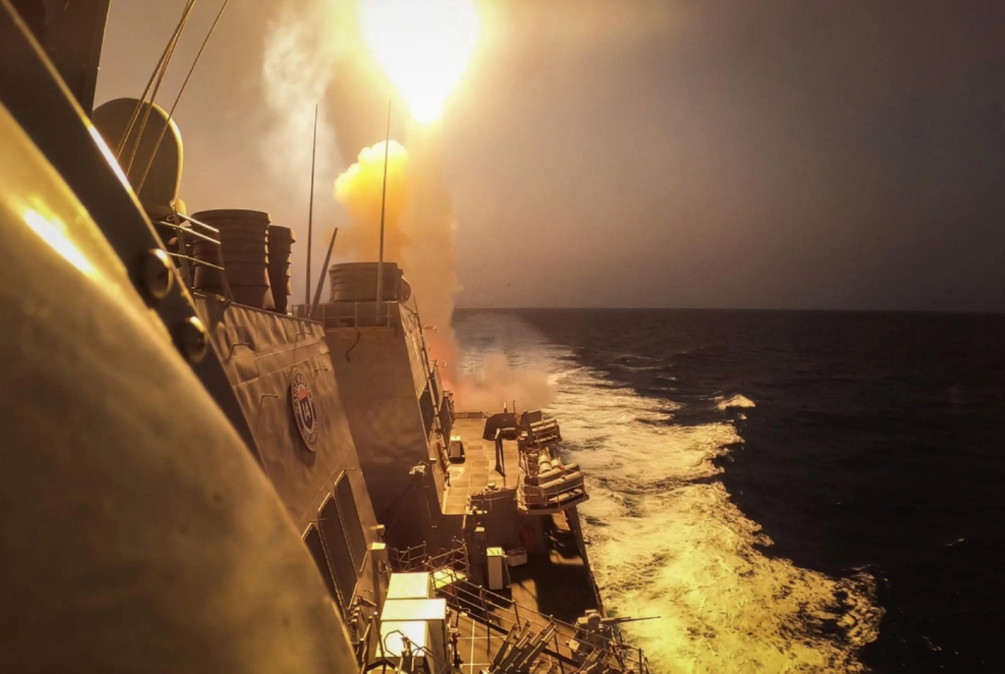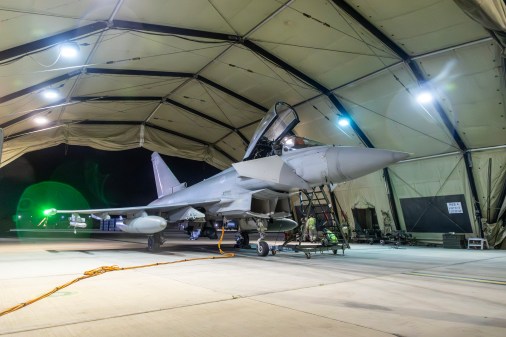Adm. Grady: Escalating Houthi-led maritime drone and missile assaults are ‘not just a U.S. problem’

Top U.S. military officials are considering multiple “options on the table” to respond to the recent escalation in Houthi rebel-led attacks on commercial vessels in Middle East waters, including the setup of a new multinational maritime patrol force to expand presence in the Red Sea, Adm. Christopher Grady, vice chairman of the Joint Chiefs of Staff, said Monday.
Since Israel’s war against the Palestine-based militant group Hamas broke out following an Oct. 7 ambush, Pentagon officials have confirmed a series of drone and missile assaults from Houthi-controlled areas in Yemen on ships in the region. Those tensions seriously intensified in the southern Red Sea on Dec. 3, as the Navy destroyer USS Carney responded to distress calls from three commercial ships that requested assistance against drones and ballistic missiles being fired from what the U.S. deems a Houthi-controlled location.
Carney’s crew ultimately shot down three unmanned aerial vehicles that looked to be heading for the Navy vessel as it was maneuvering to help the bulk carriers. In an official statement following those events, U.S. Central Command noted that the three vessels are connected to 14 separate nations and that the U.S. has “every reason to believe that these attacks, while launched by the Houthis in Yemen, are fully enabled by Iran.”
Monday, Grady reiterated those assessments during a discussion hosted by the Atlantic Council.
“It very much is an expansion of perhaps the larger conflict that is in Israel and Hamas because … there’s undoubtedly an Iranian hand in this. So, this looks a little bit like horizontal escalation,” he told NBC News correspondent Courtney Kube, who moderated the discussion.
In the vice chairman’s view, the incidents on Dec. 3 mark “a first for attacks on international shipping — and that’s a big deal.”
These events disrupted the international flow of commerce going through the Bab-el-Mandeb strait, “one of the key [shipping] choke points in the world,” Grady noted, and therefore resulted in “not just a U.S. problem, [but] an international problem.”
At one point, U.S. officials responding to the distress calls on Sunday were concerned about one of the commercial ships under attack taking on water.
“They’re in a good place now,” Grady confirmed, but that’s partly because the Carney and other Navy assets were already poised nearby to respond to the associated threats around those waters, he said.
“It does suggest then, that our presence — along with our international allies and partners — is going to be really important in that key choke point. So the question now is, ‘How do we do that with our allies and partners?’ And so I think what you will see from the maritime perspective through Central Command and the Naval command that we have there in Bahrain, we will stand up what we have done in the Strait of Hormuz before — and that is the ability with our allies and partners at key points to provide some semblance of protection through that key strait,” Grady explained.
Responding to follow-up questions, he explicitly confirmed that he expects to see increased presence in the Bab-el-Mandeb strait in the near term — much like the unit of sailors and marines the U.S. recently deployed to the Strait of Hormuz to patrol and protect against what the Pentagon said was attempts this summer by the Iranian navy to seize merchant vessels.
“There are over 30 nations that are part of the combined maritime force, the coalition maritime force that operates out of the Naval Central Command, out of the Fifth Fleet. And already seven nations have stepped forward to say: ‘We’re ready to help,’” Grady said.
Other moves under consideration to counter those attacks in the Red Sea involve reflagging ships — or embarking “security teams” of U.S. Marines on commercial vessels.
“We will continue to work with our allies and partners about potential response options against the Houthis and to keep our eye on this,” Grady said.
Among other topics he spoke about during the event, the admiral also confirmed that he’s pleased with what he views as progress the department is making to reach its aims for Joint All-Domain Command and Control, or JADC2.
“I think we’re making pretty good strides there,” he said.




